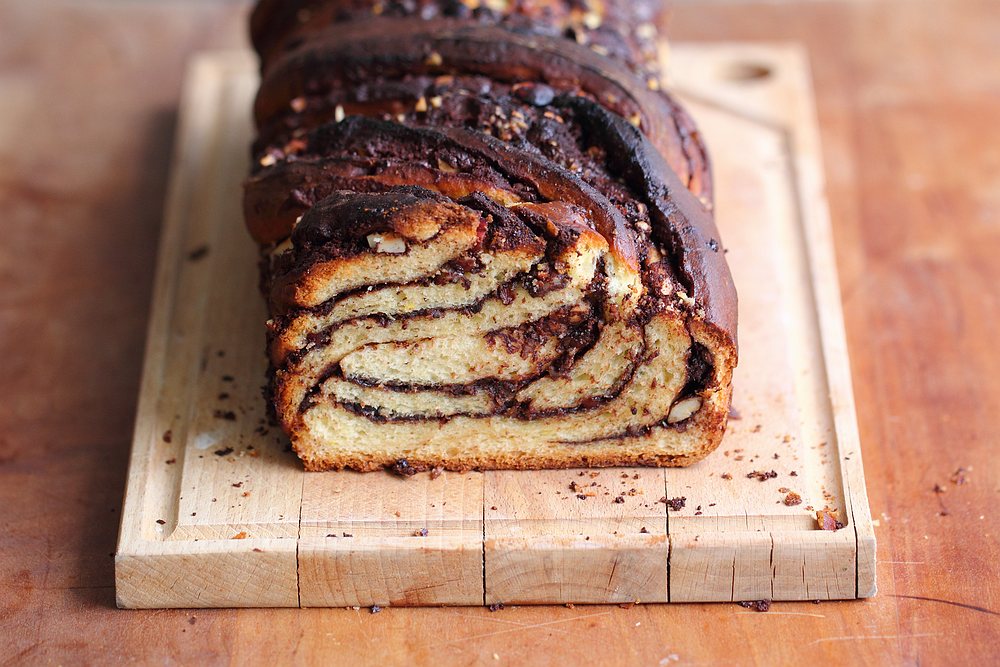
It’s been snowing in the Netherlands. You know what happens in the Netherlands when it snows? Chaos happens. On the first day of snow, the traffic jam in the country reached a record combined length of 1003 km, the railway company cancelled half the trains and the other half was delayed. Our internet was down and my students cancelled their Norwegian lesson because they were afraid to drive. Before you start imagining an epic snow storm, I should add that the snowfall was only a couple of centimeters. Which is funny, after you’ve lived in Norway, where it can really snow and life still goes on.
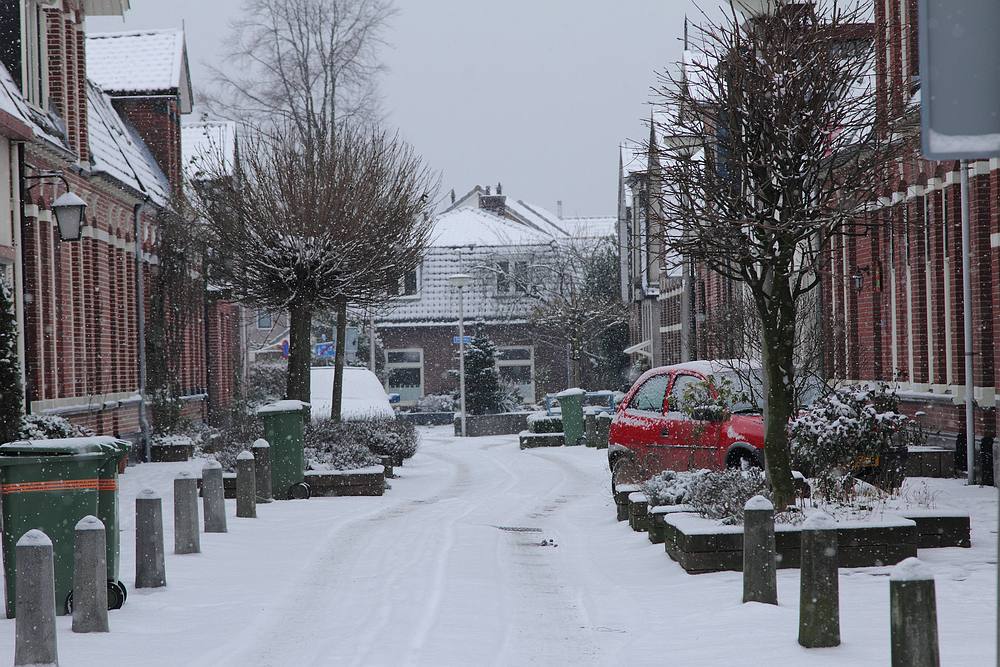
But I am not complaining, because this “natural disaster” cleared my schedule and allowed for a leisurely baking project that I’ve been planning since I got the newest Ottolenghi cookbook for Christmas.
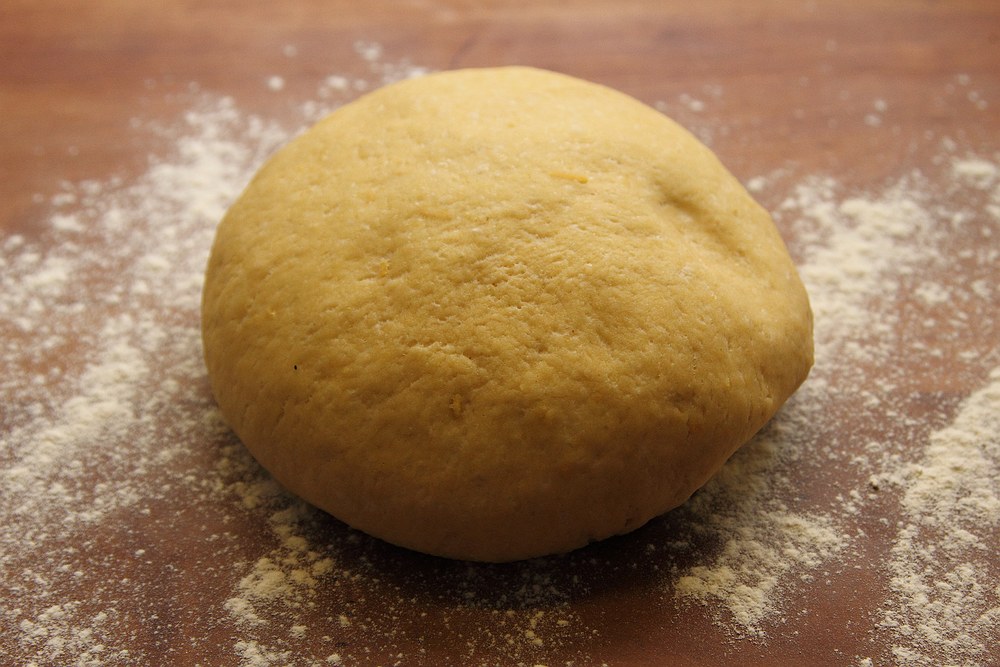
This chocolate kranz cake needs time, but that does not mean it needs your constant attention. The dough rises in the fridge overnight and then again the next day. I got plenty of other things done in the meantime, i.e. slept for 7 hours during the first rise and photographed a friend who needed a portrait for her website during the second rise. Besides, long slow rises result in superb texture. The kranz cake looks impressive, but it’s not much more difficult to make than cinnamon rolls. Braiding two strands just means crossing them a couple of times – which is nothing compared to the three-story Czech Christmas bread. But even if it were difficult, it would be worth it!
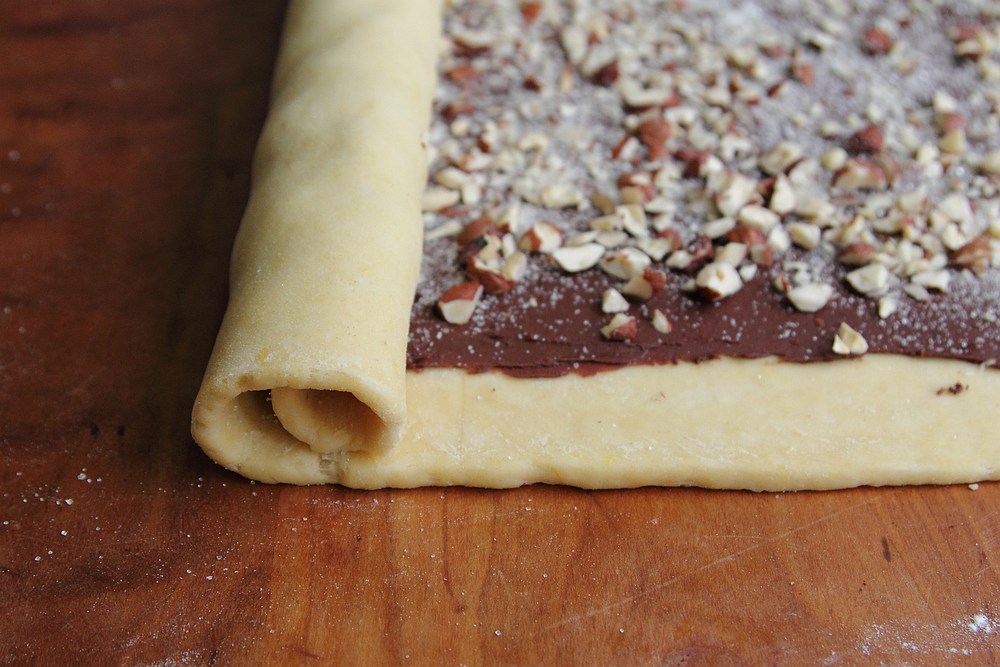
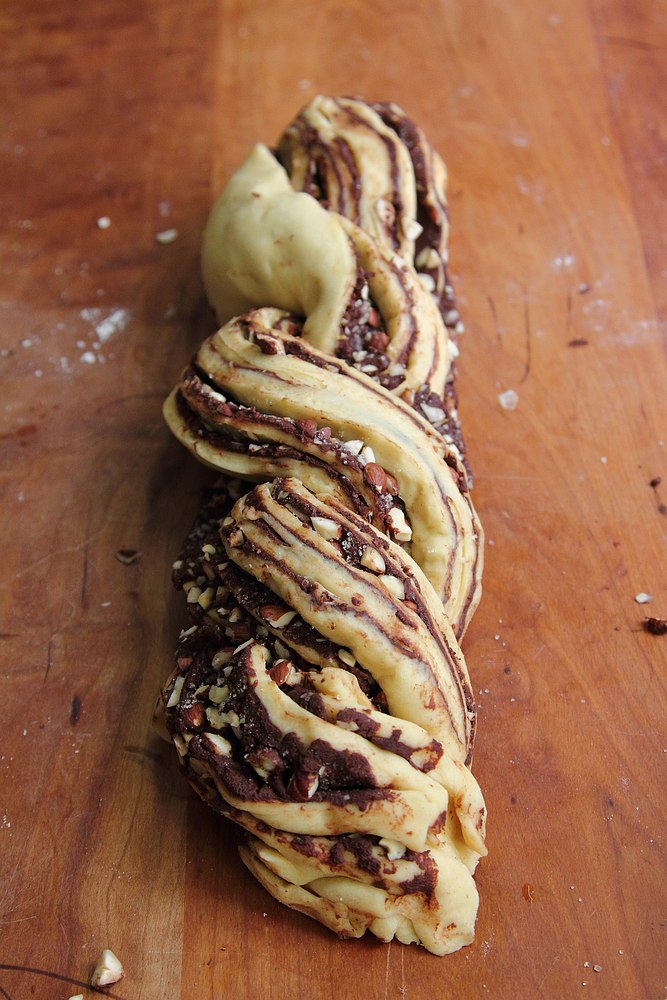
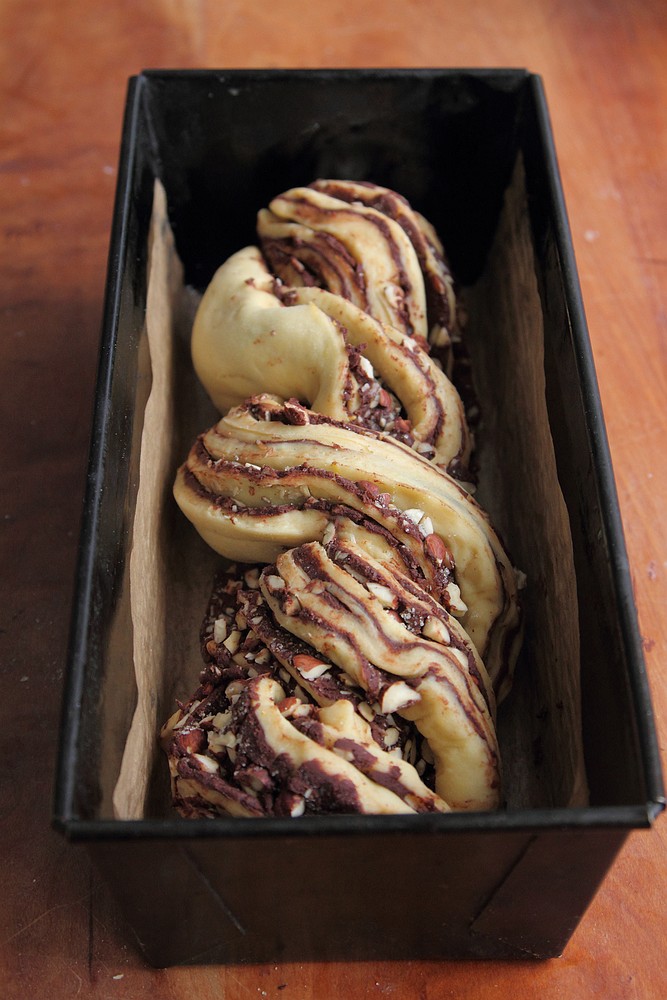
I changed the ingredients very little, but changed the method a lot. I made the dough without mixer (it’s easy – I promise) and I only made 1 large loaf, instead of 2 small. The recipe also called for brushing the cake with syrup after it’s baked, but it really doesn’t need an additional 260 g of sugar to be utterly delicious.
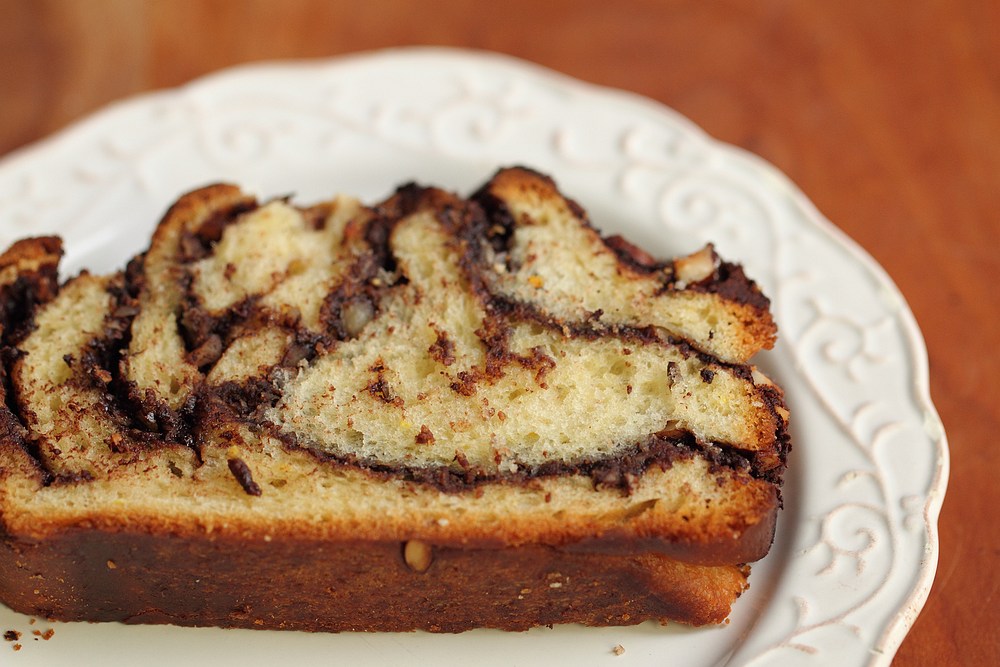
One year ago: Winter vegetable stew
Chocolate kranz cake
Adapted from Jerusalem: A Cookbook by Yottam Ottolenghi and Sami Tamimi
Please note that making the cake is spread over the period of 2 days If you don’t have a loaf tin, you can bake the cake on a baking sheet, too.
120 ml (1/2 cup) water, lukewarm
2 tsp fast-action dried yeast
530 g (4 1/4 cup) plain flour, plus extra for dusting
100 g (1/2 cup) caster sugar
grated zest of 1 small lemon
½ tsp salt
150 g (2/3 cup) unsalted butter, at room temperature
3 large free-range (or organic) eggs, at room temperature
sunflower oil, for greasing
Chocolate filling:
50 g (scant 1/2 cup) icing sugar
30 g (1/3 cup) cocoa powder, Dutch processed
1 tsp ground cinnamon
130 g (4 1/2 ounces) dark chocolate, melted
120 g (1/2 cup) unsalted butter, melted
100 g 92/3 cup) hazelnuts (or other nuts), roughly chopped
2 tbsp caster sugar
Dissolve the yeast in the water (the water must not be too warm or the temperature will kill the yeast). In a large mixing bowl, combine the flour, sugar, lemon zest and salt. Make a well in the center and pour in the water with yeast.
Mix in some of the flour mixture to make a sponge in the middle of the bowl. Slice the butter and put the slices around the sponge (the warmth of the sponge will soften the butter slightly and make it easier to incorporate).
Cover the bowl with clingfilm and leave for about 20 minutes, until bubbles have formed. Then add the eggs and mix everything together. On a well floured surface, knead the dough until it feels silky and smooth. Add as much flour as necessary to keep dough from sticking, but no more. Wash your bowl and brush it lightly with sunflower oil. Put the dough in the bowl and cover with cling film. Put dough in the fridge for at least half a day, preferably overnight.
Grease a 11,5 x 30 cm (4,5 x 12 inch) loaf tin with some sunflower oil and line the bottom with a piece of parchment.
Make the filling by mixing together the icing sugar, cocoa powder, cinnamon, melted chocolate and butter. You will get a spreadable paste. Roll the dough out on a lightly floured surface into a 40 x 40 cm (16 x 165 inch rectangle. Spread the filling over the dough, leaving a 2 cm (¾ inch) border all around. Sprinkle the nuts on top of the chocolate, then sprinkle over the caster sugar.
Brush a bit of water along the side furthest away from you. Use both hands to roll up the rectangle like roulade – try to roll it pretty tightly. Press to seal the wet end onto the roulade and then use both hands to even out the roll into a perfect, thick cigar, sitting on its seam.
Trim about 2 cm (1 inch) of both ends of the cake with a serrated knife. Use the knife to gently cut the log down the middle lengthwise. Cross one piece over the other, then continue to criss-cross the pieces in both directions to form a braid. Pinch the tips together at each end to seal off the ends.
Carefully lift the cake into your prepared loaf tin. Cover with a wet tea towel and leave to rise in a warm place for about 1-1 ½ hours.
Preheat the oven to 180 degrees Celsius (350 Fahrenheit), making sure you allow plenty of time for it to heat fully before the cake has finished rising.Remove the towel and place the cake in the oven. Bake for 20 to 25 minutes, then rotate the pan. Bake for about 20 to 25 more minutes, until the top is rich dark brown, the sides are a rich golden brown and the loaf sounds hollow when thumped on.
Let cool completely before serving so that the chocolate filling has time to set.
The cake will keep for at least two days at room temperature, wrapped in foil, or up to a couple of weeks when frozen.
10 comments for “Chocolate kranz cake”